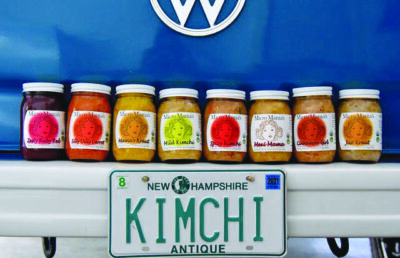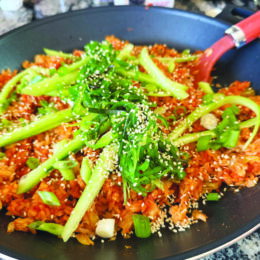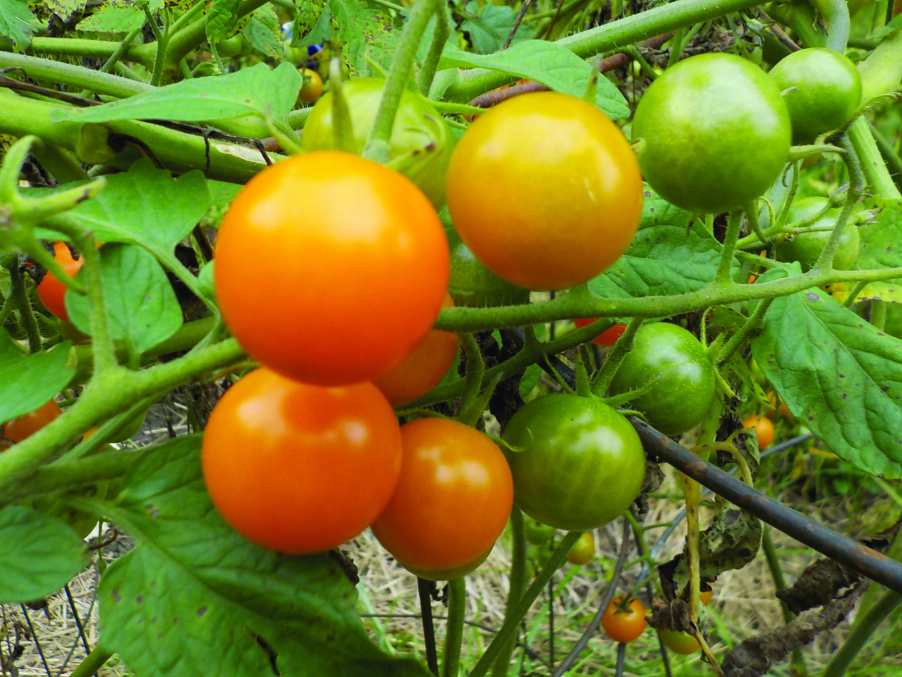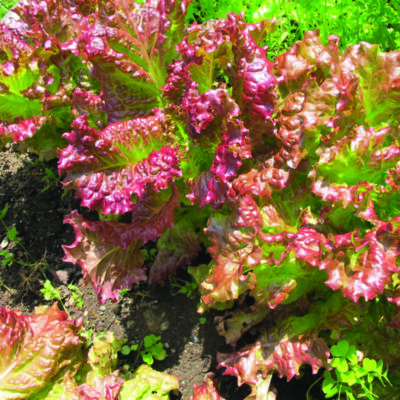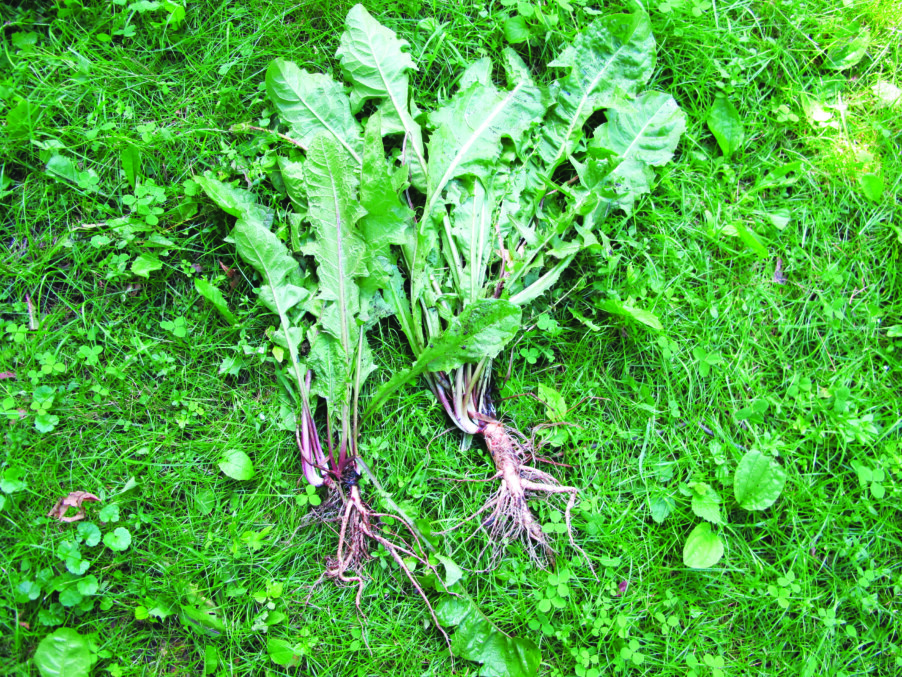O’Neil Cinemas returns to Londonderry and we check in with Red River Theatres in Concord PLUS A look at the summer movie schedule
As summer movie season begins, we take a look at a few local theaters. O’Neil Cinemas expands — and returns — to Londonderry. We also check in with Red River Theatres, which is now the only movie theater in Concord. And we take a look at the summer movie schedule. Grab some popcorn and get ready to go to the movies.
O’Neil Cinemas returns to Londonderry: The newly refurbished theater will include a full service bar
By Zachary Lewis
zlewis@hippopres.com
The brand new O’Neil Cinemas in Londonderry is expected to hold its grand reopening July 1.
O’Neil Cinemas is family-run and also has a theater in Epping, as well as one in Littleton, Mass.
Dan O’Neil spoke to the Hippo about the grand reopening and how this family business, led by his father, Dan O’Neil Sr., has been in the movies for decades.
“I’ve been in this business since I was a kid, helping out my brother in the business. Tim O’Neil. He’s also in the business. He’s years younger than me. We did everything. I was a projectionist. We cleaned the restrooms, sold concessions, things like that. So after college, we got in the business,” Dan O’Neil said.
According to a recent press release, O’Neil Cinemas was founded in 1982 and was operated by the O’Neil family before leasing the Londonderry facility (at 16 Orchard View Dr.) to AMC Theaters in 2014.
“We have a legacy of about 40 years in New Hampshire,” Dan O’Neil said. “So we leased this theater in Londonderry for 10 years to AMC. We own the real estate in the building. They decided after 10 years — it was a 10-year term — that they would not renew. And we thought the Londonderry market was a great market. It’s a wide open market, it’s a growing market and we’re very, very positive about the industry going forward. So we decided to invest in this location.”
They had built an eight-screen theater in Littleton, Mass., which is a model for what they are bringing into Londonderry. (O’Neil Cinemas also operates a theater at Brickyard Square, 24 Calef Highway in Epping. See oneilcinemas.com.)
“We got into the food and beverage business in that theater. It has a lounge. It has a full-service bar. So that’s kind of our model going forward now, is to bring in upgraded amenities, making it more of an experience for people to come out of the house. We have a full kitchen. We sell good food,” O’Neil said.
They’ve made a lot of fun changes.
“So currently, before we started renovation, it was a 10-screen complex. The new renovation will have nine screens. And we’re renovating one of the auditoriums into what we call the Backstage Lounge. It will be a full-service bar plus a lounge atmosphere. And we’ll have a full kitchen in the complex where we’ll sell upscale food and beverage. So you can get a meal before the movie, or after the movie, or a drink, a crafted cocktail,” O’Neil said.
“We also will be delivering directly to your seat,” he said. “So if you want to order through an app, you’ll be able to get it to your seat. If you’re buying tickets and you want to order your food, you can ahead of time. When you get to the theater, you scan your ticket in, it will fire that food to the kitchen, so you won’t have to stand in any lines. You can just go directly to the seat, and it will be delivered to you.”
Image and sound are priorities for O’Neil cinemas.
“Two of the auditoriums in this complex are premium large-format auditoriums. We call them the Grand DLX. At the premium large-format auditorium, they’re all state-of-the-art laser projection, Dolby Atmos sound, which are a 64-speaker surround sound system. It’s advanced object-based audio technology, so the speakers are strategically placed throughout the theater. You have overhead speakers for three-dimensional sound. It’s basically a precise sound positioning capability so that if a helicopter’s flying over your head, it’ll feel like you can hear the helicopter above you. And it’s more of an immersive experience,” O’Neil said.
Moviegoers in the Grand DLX auditoriums will experience ‘Buttkicker’ heated recliners with swivel tables that will synchronize vibrations with the film’s soundtrack.
“We’ll have one auditorium that has D-box motion seats,” he said. Luxury D-Box Motion seats use haptic technology, according to the press release. “Those seats actually move and synchronize to the soundtrack or the action on the screen. So it physically engages the viewers by creating synchronized movements to the action on the screen.”
Moviegoers will be able to opt out or control how much of the feel they get. “You could turn it off. You can lower the sensation so it’s not as high of a movement. Or you can go full blast with that thing,” O’Neil said.
No matter the theater, the seats will be comfy.
“The rest of the auditoriums will have full reclining heated seats. We’re really trying to make this a first-class viewing experience. The brightness on the screen will be fantastic.”
Londonderry will have revival screenings of cinema classics, and more than films will be screened.
“We can actually now with the digital technology, as long as we have licensing rights, we can stream live events, like currently we’re doing UFC fights down in our Littleton and Epping locations. We showed the Metropolitan Opera live from New York. So you can actually come to our theater if you’re into the opera, Metropolitan Opera, and view it live,” O’Neil said.
Movies have always held a special place for Dan O’Neil.
“I was about seven years old in ’77, so I was a big Star Wars fan. That movie was incredible to me…. We actually opened the theater in Londonderry during 1983 after construction and the first movie we showed was Return of the Jedi. I just remember the line going down the middle of the parking lot. Of course, back then we didn’t have reserved seating. But yeah, it was a fantastic experience being in the pack. You know, those movies were always sold out. And just being in there and experiencing it with other kids and people was amazing,” he said.
He mentioned why he believes people still get excited to go out to the movies. “I think we’re communal creatures, and we like storytelling, and when you can do it with other people it just adds to the emotion of it. That’s what makes memories in my mind is the emotions you feel with other people. I think that’s why after 100 years, the business is still around.”
There will be a community open house at some point before the grand reopening in July.
“We’re shooting for July 1, and that’s right before the Fourth of July weekend and there’s supposed to be some … big movies opening, Jurassic World being one of them, so we’re trying to hit that for a big grand opening,” O’Neil said. “I think that once the community sees what we can offer for out-of-home entertainment, I think it’s going to be a real positive thing for the community.”
The city’s theater: Red River is Concord’s only movie house
By Zachary Lewis
zlewis@hippopress.com
Red River Theatres is a community hub in Concord.
“We work as a full-time movie theater; we also are mission-based,” said Angie Lane, Red River’s Executive Director.
“We serve by providing space to other nonprofits to show films that speak to their mission. We do some of our own programming based off things that we believe that our community wants. It could be sometimes that we show a documentary, but it could also be a sing-along or a Rocky Horror Picture Show.” The venue’s concessions include local sweets from Granite State Candy and local beer and wine, Lane said.
Lane and her crew are still coming back from Covid closures.
“For us, coming out of Covid, we were closed for over a year,” she said. “It’s funny, because people are like, ‘Oh, you’re still talking about Covid,’ but ultimately we’re still feeling the impact of that. We’re working to get back up to full speed.”
“I can be honest and say we’re not even fully staffed to where we were pre-Covid, so we have a very tiny team in the background managing everything, and this year we’ll be turning 18, so there’s so many things that are kind of like intersecting at the same point for us,” she said.
Now that Red River is the only movie theater in Concord, it has access to more films, including more mainstream movies and kids’ films like Snow White.
“With the closure of Regal and just the way that movie distribution has changed so much, especially in post-Covid world, we have been able to actually acquire those films. So for a very long time there were a lot of barriers for us to bring in films like that. It’s not that we are necessarily saying, ‘Like, OK, we’re going to expand to this,’ it’s just that we never quite had the availability that we do now. So we are excited to be able to offer a diversity of film that’s a little wider than we have before. You can’t please everyone, and so of course some people want more straight what they believe are independent films and don’t love it when we show Snow White. But what’s lovely is we’re able to bring in new people to Red River,” Lane said.
There are other obstacles to overcome with film selection.
“To be a working movie theater in this time and reality is really challenging. So we’re excited to be able to show a wider variety of films, but the reality is that distributors are just not producing as many films as they did pre-Covid…. So a lot of times we do consciously choose and curate the films based on what we believe align with who we are as a movie theater. On the other hand, sometimes there’s a limited amount of movies that we can choose from, so we try to do our best to pick the films we feel that our audiences want to see and hopefully expand our audiences at the same time.”
Lane described how an independent movie theater chooses a film for screening.
“… [W]e work with a film broker who manages the bookings for hundreds of different cinemas similar to Red River. Then we internally, as the team, also talk about what’s being offered to us. These films are what we would consider ‘first run’ and we sell the tickets and we do just a straight ticket split. For our own programming we book them as one-offs and we pay either a fee or a ticket split or both. … ,” Lane said.
For new films, typically 50 to 60 percent of ticket sales head back to the movie distributor, so theaters need people in the seats to keep bringing magic to the community.
“We book out films on pretty short notice, so maybe a month out,” Lane said.
“We’re excited to get the new upcoming Wes Anderson movie The Phoenician Scheme, and … No Other Land, which is the Oscar-winning documentary that has not really been getting as high distribution,” she said.
Red River also gets support from memberships. “You can become a member and you can get benefits,” Lane said. It costs $65 for an individual membership and there are other options as well. Membership fees helped keep Red River afloat during Covid. “A lot of people during Covid still kept their membership going…” Lane said.
Look for some outdoor screenings this summer. “We are planning on doing our free outdoor movies with Parks and Rec, and we’ll probably do some other partnered outdoor movies,” Lane said. This summer’s titles are not decided yet.
Lane reflected on Red River’s role in Concord, saying, “We’re about to turn 18, and we’ve become a vital, valued community organization. We show movies, but we also provide … a space for [people] so they can rent this theater for their own movies. We work a lot with different partner organizations to bring different programming….”
“I think now more than ever a lot of people want something, not necessarily to escape to … But I think that people really want to engage in different ideas or other realities and kind of dream about something that can be different and better,” Lane said.
Red River Theatres is at 11 S. Main St. in Concord. See redrivertheatres.org.
Summer of movies! Remakes, sequels, Marvel and more summer movies
Compiled by Amy Diaz
adiaz@hippopress.com
Another first Friday in May, another Marvel movie.
Except everything about movies is so much weirder than in, say, 2017 when the summer movie season kicked off with Guardians of the Galaxy Vol. 2. But there are definitely promising films on the schedule — a new Wes Anderson movie, a new Celine Song movie, a new Ari Aster, and Kristen Scott Thomas is directing a movie. Here, with guidance from IMDb on dates and casts, are some of the movies slated for release in theaters this summer.
Thunderbolts Can Marvel’s quippy Suicide Squad-y gang get us all excited about Marvel again? The first trailer at least had me hopeful. (May 2)
Fight or Flight Josh Hartnett is an assassin on, as the trailer says, a plane full of killers. (May 9)
Friendship Tim Robinson and Paul Rudd make casual male friendships super weird in this movie whose trailer gives dark comedy vibes. (May 9)
Juliet & Romeo It’s a musical, Rebel Wilson plays Juliet’s mother. (May 9)
Final Destination: Bloodlines LOL to these people in the trailer enjoying a backyard barbecue unaware that they’re in a Final Destination movie. (May 16)
Mission Impossible: The Final Reckoning These movies are all about Tom Cruise doing crazy stunts and we in the audience thinking “wheeee!” So, in that spirit, I’m excited about The Final Reckoning, I enjoy saying “wheeee!” to a motorcycle jumping onto a moving train or whatever. Also, Angela Bassett is here. (May 23)
Karate Kid: Legends Jackie Chan reprises his role from 2010’s The Karate Kid and Ralph Macchio, fresh off the All Valley over on the Netflix series Cobra Kai (watch it!), is Sensei Daniel LaRusso. (May 30)
The Phoenician Scheme The trailer for Wes Anderson’s latest is exactly what you’d expect with its studied symmetry and its retro, tactile settings and its familiar roster of players: Scarlett Johansson, Tom Hanks, Benedict Cumberbatch, Jeffrey Wright and Benicio Del Toro. (June 6)
Ballerina “From the world of John Wick” might be all you need to know about this movie starring Ana de Armas and bringing back many Wick Universe faves (Ian McShane, Anjelica Huston, the late great Lance Reddick and Keanu Reeves himself). (June 6)
I Don’t Understand You Nick Kroll and Andrew Rannells have promising chemistry and comedy chops in the trailer about a couple in rural Italy who are awaiting the birth of their baby and maybe also accidentally do a little murder. (June 6)
Materialists Writer director Celine Song (of Past Lives) offers this movie, billed as a rom-com, starring Dakota Johnson as a matchmaker, with Chris Evans and Pedro Pascal. (June 13)
28 Years Later There’s no discharge in the war. The eerie trailer for this third movie in the series that started with 2002’s 28 Days Later was probably the first trailer I saw that got me excited for a 2025 movie. Director and co-writer Danny Boyle is back along with co-writer Alex Garland for more zombie terrors. (June 20)
Elio The Disney Pixar movie I feel like I’ve been watching trailers for for years is slated for summer release. Elio is a human boy who accidentally is labeled as the leader of “uh, Earth” by visiting aliens. (June 20)
F1 Brad Pitt is a retired Formula One racer mentoring a rookie played by Damson Idris — which kinda feels like a plot to one of the Cars movies. The trailer suggests that this one is hoping for your IMAX dollars with its “you are there” driving scenes. (June 27)
M3gan 2.0 There’s a lotta “slay, b—-” energy in this movie’s trailer. Maybe a little too self-aware but I guess in this movie environment we take our cheap, silly thrills where we can get them. (June 27)
Jurassic World: Rebirth This franchise reboot does at least offer a trailer with fun Indiana Jones adventure-y vibes, what with the sneaking back to an island for dino DNA. (July 2)
Superman I mean, he gets to have his dog in this one so that’s nice. Director James Gunn and Superman David Corenswet give the Man of Steel another go. (July 11)
Smurfs Apparently this is a new Smurfs, not related to the 2010s Smurfs movies. “Rihanna is Smurfette”; also promising is the cast that includes John Goodman, Natasha Lyonne, Nick Offerman, Sandra Oh, Octavia Spencer, Amy Sedaris and Billie Lourd. (July 18)
Eddington Ari Aster (of Hereditary and Midsommar) writes and directs this movie about a New Mexico town during the pandemic — are we, like, ready for that? The trailer stressed me out, in a good way I think. Emma Stone, Joaquin Phoenix, Pedro Pascal and Austin Butler star. (July 18)
I Know What You Did Last Summer New kids, new summer but Jennifer Love Hewitt and Freddie Prinze Jr. also return, which feels fun. (July 18)
The Fantastic Four: First Steps This Fantastic is, according to Wikipedia, the beginning of the MCU’s Phase Six. The Tomorrowland look is fun, at least. (July 25)
The Naked Gun I am in for this Liam Neeson-fronted remake (I guess he’s supposed to be the Leslie Nielsen character’s son). The trailer has that promising “stupid fun” vibe. (Aug. 1)
The Bad Guys 2 The animated book-to-movie series gets its second feature installment about Bad Guy animals turned Good Guys but roped, as IMDb says, back into one last Bad Guy job. Unlike some of the direct-to-streaming specials, we get the original voices: Sam Rockwell, Marc Maron, Craig Robinson, Awkwafina and Anthony Ramos. (Aug. 1)
Freakier Friday Jamie Lee Curtis and Lindsay Lohan return as a mother and daughter who once body-swapped to learn valuable lessons — and now it happens again with two extra kids in the mix: Lohan’s character’s daughter (Julia Butters) and stepdaughter-to-be (Sophia Hammons). The trailer made me kinda hopeful? (Aug. 8)
My Mother’s Wedding Kristen Scott Thomas directed and co-wrote this movie where she also stars as the mother of three adult daughters (one of whom is Scarlett Johansson) gathering for the mother’s wedding. According to Wikipedia the film had a 2023 premiere at the Toronto International Film Festival. (Aug. 8)
Nobody 2 The 2021 “what if John Wick but suburban dad Bob Odenkirk” action movie gets a sequel. (Aug. 15)
The Roses Billed as a remake of 1989’s The War of the Roses, this comedy stars Olivia Coleman and Benedict Cumberbatch — both of whom appear skilled with the dark comedy in the movie’s trailer — along with Allison Janney, Kate McKinnon and Andy Samberg. (Aug. 29)
The Toxic Avenger Wikipedia describes this movie as a reboot of a film series that started in 1984 and had sequels and Marvel comic books and played some film festivals in 2023 before it languished for a while without a distributor due to gore. And it stars Kevin Bacon, Peter Dinklage and Elijah Wood. Trailers look gross and fun. (Aug. 29)
Caught StealingBased on the book of the same name by Charlie Huston, this Darren Aronofsky-directed movie Has A Cast — D’Pharaoh Woon-A-Tai (Reservation Dogs’ Bear), Vincent D’Onofrio, Regina King, Bad Bunny, Matt Smith, Zoe Kravitz, Liev Schreiber and Austin Butler. The plot description says it’s set in 1990s New York City — OK, I’m in. (Aug. 29)




